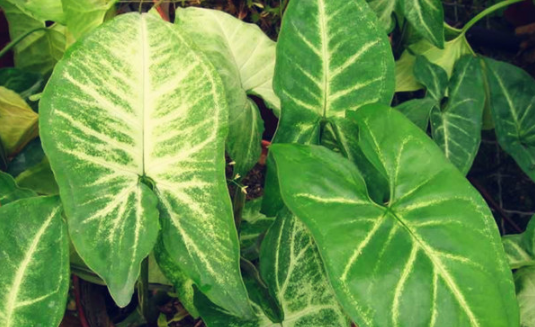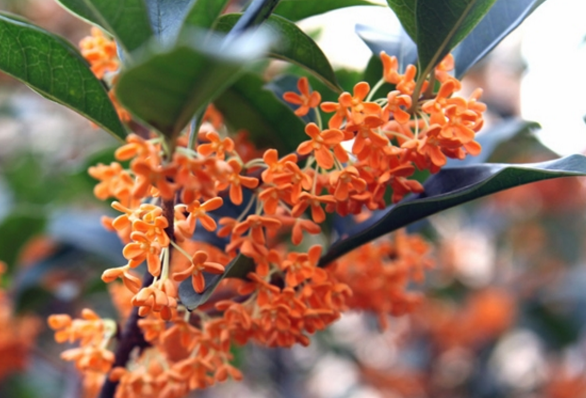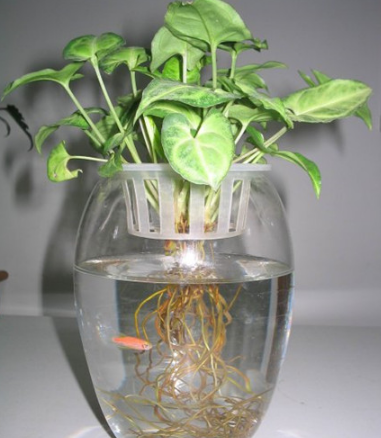How to cultivate potted white butterflies correctly? is it poisonous?
White butterfly, also known as arrow leaf taro, is a plant of the genus Araceae. White butterfly shape is beautiful, leaf shape is changeable, elegant and natural, and green apple, vine green velvet, also known as Tiannanxing family nature indoor foliage plants. It is also a very popular indoor hanging basin decoration material in Europe and America at present.

How to cultivate White Butterflies in potted plants correctly
In recent years, white butterflies have become the representative of family foliage plants, so it has attracted many flower friends to compete for culture, and it is not difficult to raise white butterflies in pots.
1. The soil of white butterflies
White butterfly soil should use rich, loose and well drained sandy loam. It is best to use potted soil made from our common rotten leaf soil, your fill and coarse sand.
2. The watering of white butterflies
White butterflies like a humid environment, so they are afraid of drying. In the peak growth period of white butterfly in summer, it is necessary to fully add water to the white butterfly to keep the basin soil moist to facilitate the rapid growth and development of stems and leaves.
Spray water around the leaves every day to keep the surrounding air humidity high, the leaves will have a good ornamental effect if they grow healthily. If there is not enough water or is affected by drought, it will make the leaves rougher and smaller.
3. The light of the white butterfly
White butterflies can quickly adapt to the growth environment, healthy growth, and can better adapt to different degrees of light environment. Stems and leaves growing in strong light will show lavender, and the leaves are thicker and lighter in color.
Growing in low light, the sepals are narrow and the leaves are dark. White butterflies are most suitable for growing in places with scattered light of love, and 50% shading is the most suitable. Variegated leaf varieties will also appear that the color spots are not obvious when the light is insufficient.
4. The temperature of white butterflies
White butterflies are not cold-resistant, and the growth temperature should be controlled in the range of 22-30 ℃. The growth is relatively slow at 15 ℃, and the stems and leaves will stop growing at 10 ℃. Freezing injury will occur at about 5 ℃ in winter.
5. Fertilization of White Butterfly
White butterflies need to be fertilized every 1-2 weeks during the growing period. Pay attention to the maintenance of white butterflies, if placed indoors, there is no need to grow too fast, control the amount of fertilizer. The brightness of leaves can be improved by reducing the use of nitrogen fertilizer, and the white markings of leaves can be made more obvious.
6. Insect pests of white butterflies
The common pests of white butterflies are leaf spot and gray mold. When pests occur, 70% of Dysen zinc wettable powder can be used to control them. The pests of white butterflies include thrips and whiteflies, which can be sprayed with 1500 times of omethoate when pests occur.
Is the white butterfly poisonous?
1. White butterflies are poisonous
White butterfly is a plant of Araceae, it is said that Araceae plants are basically poisonous, poisonous parts are mainly juice, dripping water and rhizomes, and white butterflies are no exception.
White butterflies are poisonous, mainly in their juices and rhizomes. In the process of breeding, if the juice is accidentally touched with the skin, or the entrance, or splashed on the eyes, it may cause poisoning. The entrance may cause burning sensation in the throat, numbness in the mouth and tongue, edema and other symptoms.
If you accidentally come into contact with the juice of a white butterfly, you should immediately wash it with a lot of water, and you can also use some cool liquid or licorice food, drink more boiled water, sweat and urinate, and detoxify. If the condition is serious, you need to see a doctor in time.
2. Attention should be paid to indoor culture of white butterflies.
White butterfly is a good indoor ornamental plant, strong foliage, deeply loved by people, so there are many people who want to raise it indoors, but there are a few points to pay attention to.
First of all, when raising white butterflies, try to get in touch with it as little as possible. it is best not to plant white butterflies in the room with children. children are young and pay less attention, and children are curious and like what to eat at hand. if you accidentally eat the leaves or branches of the white butterfly, it may lead to poisoning.
Secondly, if it is indoor breeding white butterflies, then it is necessary to reduce touch as far as possible, do not come into contact with the juice of white butterflies, and do not try to eat, so as to avoid poisoning.
Finally, when raising white butterflies, sometimes pruning and other operations are inevitable in order to make them grow well or maintain the beauty of the plant shape. If you want to prune and so on, it will certainly cause the juice to flow out, so it is best to put on gloves to operate at this time, and wash your hands thoroughly after the work is finished.
Phalaenopsis culture methods and matters needing attention, Phalaenopsis bonsai price
Phalaenopsis is like a butterfly orchid and has the reputation of "queen of orchid". Won't such a meaningful Phalaenopsis arouse your desire for breeding? If so, do you know the breeding methods and precautions of Phalaenopsis? Do you know the price of Phalaenopsis? The following love you nest editor to introduce to you the knowledge in this area. [plant recommendation] Indoor plants touch fragrant wood, hydroponic plants, small potted plants, flowers, fengshui, radiation protection plants.
Phalaenopsis culture methods and matters needing attention, Phalaenopsis bonsai price
[plant archives]
English name: Phalaenopsis
Scientific name: Phalaenopsis amabilis
Alias: butterfly orchid
Family: Orchid
Genus: Phalaenopsis
Distribution: most of them are found in humid Asia, naturally distributed in low-latitude tropical islands such as Aronm, Myanmar, Indian Ocean islands, Malay Peninsula, Nanyang Islands, Philippines and Taiwan. Phalaenopsis is the most famous in the forests around Wusenyong in Taitung and on Green Island.
Morphological features: there are about 100 species of Phalaenopsis that can be found and recorded in the world, of which two kinds of Phalaenopsis are the most famous: the two-leaf tongue orchid has white flowers with smaller plants, and the green tongue orchids are larger, greenish-white and larger in plant shape. Both of them have 5-15 flowers, fragrant and clustered into spikes.
[Phalaenopsis culture method]
★ I. sowing and breeding method
This method can breed a large number of high-quality seedlings, and is not easy to transmit viruses and other diseases, but also can use the means of hybridization to cultivate new varieties with better, more novel and more colorful patterns. Generally speaking, the sowing methods can be divided into natural sowing methods and aseptic sowing methods.
★ II. Pedicel budding and reproduction
After Phalaenopsis withered, seedlings with roots will grow on the pedicels, which can be used to cultivate a new Phalaenopsis. The method is to cut off the flowering part of the pedicel first, then carefully cut off the bracts of the first to third internodes in the upper part of the pedicel with a blade or sharp blade to expose the bud points in the internodes; apply hormones such as budding agents or indolebutyric acid evenly on the exposed Internode nodes with cotton swabs.
★ III. Broken heart to accelerate sprouting and reproduction.
Remove the highest heart leaf from the top of the stem, and be careful to destroy the growth point of the stem tip so that it cannot grow upward; after a period of time, 2 or 3 new buds can grow on the stem nodes near the base after the wound is dried or sterilized with fungicides; when the new buds grow and the roots grow out of the base, they can be cut off and planted to become a new plant.
[matters needing attention in Phalaenopsis culture]
★ watering should be moderate, not too frequent.
★ should maintain a proper temperature, especially the domestic Phalaenopsis should pay more attention to the maintenance of Phalaenopsis in winter.
★ fertilization should be appropriate, and the fertilization cycle is usually about 7-10 days.
★ should use suitable flowerpots, do not use small pots for large plants or large pots for small plants, which will give Phalaenopsis a bad growing environment.
[price of Phalaenopsis]
The price of Phalaenopsis potted plants sold in different regions is different, the specific editor can provide you with a little price reference, such as the price reference of Phalaenopsis in Jiangsu is 0.20 yuan per plant, and the price reference in some areas of Shandong is 0.05 yuan per plant.
"conclusion: today, the editor introduces the breeding methods and matters needing attention of Phalaenopsis as well as the price of Phalaenopsis potted plants. If friends want to know more about plant culture methods, please continue to pay attention to the article update of soft plants in the decoration network.
[more Encyclopedia of plants]
The Culture method of Bean Green the Culture method of Iron Tree the function of cactus the characteristics of peony how to raise Milan flower
The culture methods and precautions of green pineapple? does the fairy ball protect against radiation? the current culture method of cyclamen leaves yellow and blue witch price
The cultivation method of iron tree of rich bamboo and iron tree is the rubber tree poisonous? is the sun flower language safe tree cyclamen Phnom Penh tiger skin orchid
How to raise nine big flowers, Cymbidium, Cymbidium, Cymbi
Culture method and function of Phalaenopsis
Phalaenopsis is a kind of plant suitable for indoor culture, with butterfly-shaped flowers, elegance and elegance, and enjoys the reputation of "queen of orchids". Most Phalaenopsis are produced in humid Asia, which determines the growth characteristics of Phalaenopsis. Must be ventilated, breathable, moderate temperature, high humidity environment can be said to be an excellent environment for breeding Phalaenopsis. Let's learn more about its specific breeding methods and functions. Water Phalaenopsis is an epiphytic orchid whose roots are exposed to the air and can absorb water from the moist air. When artificial cultivation, the root is buried in the cultivation substrate, too much watering, the substrate ventilation will become worse, the fleshy root will rot, so it should be watered with humidity. Temperature family raise Phalaenopsis, first of all to ensure the temperature. Phalaenopsis is native to the tropics and likes the environment of high temperature and humidity. The lowest temperature during the growth period should be kept above 15 ℃. Phalaenopsis grows well when the daytime temperature is 27 ℃ and the night temperature is about 18 ℃. At the turn of autumn, winter and spring, and when the winter temperature is low, attention should be paid to warming rooms with heating equipment in winter, and cooling and ventilation should be paid attention to when the summer temperature is on the high side. Although Phalaenopsis prefers shade, it is still necessary to make the orchid plant accept some light, especially before and after flowering, the appropriate light can make Phalaenopsis blossom earlier, and the flowers are gorgeous and lasting, and should generally be placed indoors where there is scattered light. Do not let the sun shine directly. The principle of fertilization in nutritious cultivation of Phalaenopsis should be less fertilization and light fertilizer. In the normal growing period, 2000 times of orchid special fertilizer was applied to fertilize the roots. depending on the growth, once every 2 weeks to 3 weeks, 15-30-15 water-soluble high-phosphate fertilizer 1000-2000 times before flowering could be sprayed about 10 days, and fertilization should be stopped in flowering and low temperature seasons. The plants that act on Phalaenopsis are very peculiar, with neither stolons nor pseudobulbs. Each tree produces only a few broad leaves as thick as a spoon, stacked alternately on top of the base. The thick white air root is exposed around the leaves, and some cling to the outer wall of the flowerpot, which is very natural and wild. Moreover, Phalaenopsis is a flower blooming during the Spring Festival. In this cold and withering season, why not add a piece of vitality to people's home? its role in beautifying the environment is self-evident. Conclusion: people often say that the more beautiful, the more beautiful things are more toxic and harmful, and Phalaenopsis is just an exception, gorgeous appearance, but it is actually a non-toxic plant, want to choose potted friends, this is a good choice. The above is the breeding method of Phalaenopsis and its function that I bring to you. I hope it can bring some help to the friends who love flowers and cherish flowers. [more] | plants suitable for indoor cultivation | Culture method of Crab claw Orchid | Culture method of wealth tree | efficacy and function of wood incense | except formaldehyde plant | | efficacy and function of Sophora japonica flower | Peony blossom | how to raise rich bamboo in winter | what plant absorbs formaldehyde | evergreen flowers | | Culture method of daffodil | poinsettia culture method | Cyclamen culture method | Hydrangea | Flower culture method | benefit of bayberry | | Happiness tree culture method | efficacy and function of Ganoderma lucidum | effect and function of peppermint | Culture method of Gardenia jasminoides | how to grow orchid | | efficacy and function of mango | efficacy and function of Platycodon grandiflorum | Culture method of money tree | symbolism of lily flower | Fruit preservative |
- Prev

What is the reason for the correct cutting of sweet-scented osmanthus leaves?
Sweet-scented osmanthus belongs to the evergreen tree of Melilotus family. Its branches and leaves are dark green and graceful. It is fragrant and fragrant when it blossoms. It can not only enjoy the flowers, but also can eat and extract flavors. It has high ornamental and economic value. Osmanthus fragrans have few seeds and are difficult to obtain, so they are propagated by cuttings, in which tender wood cuttings are easy to obtain.
- Next

How to correctly cause the yellowing of leaves in hydroponic culture of white butterflies and what to do
White butterflies like to grow in hot, humid, loose, fertile, slightly acidic soil. It has strong adaptability and can adapt to different light environments. In the strong light, the stems and leaves are slightly lavender, the leaves are larger and the color is lighter; the flower language of white butterflies is the beauty of simplicity and simplicity. How to correctly select hydroponic containers for white butterflies
Related
- Fuxing push coffee new agricultural production and marketing class: lack of small-scale processing plants
- Jujube rice field leisure farm deep ploughing Yilan for five years to create a space for organic food and play
- Nongyu Farm-A trial of organic papaya for brave women with advanced technology
- Four points for attention in the prevention and control of diseases and insect pests of edible fungi
- How to add nutrient solution to Edible Fungi
- Is there any good way to control edible fungus mites?
- Open Inoculation Technology of Edible Fungi
- Is there any clever way to use fertilizer for edible fungus in winter?
- What agents are used to kill the pathogens of edible fungi in the mushroom shed?
- Rapid drying of Edible Fungi

